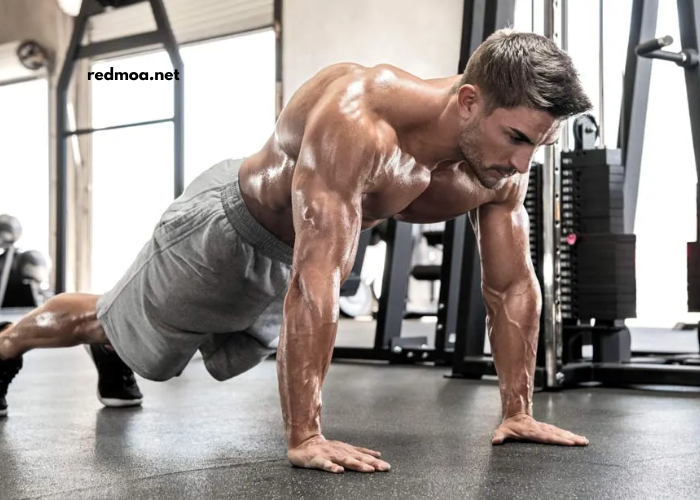Maintaining a healthy lifestyle is a crucial part of living a long, fulfilling life. Staying fit doesn’t just mean looking good, but also feeling your best both physically and mentally. Whether you’re a fitness beginner or someone looking to improve their current routine, understanding the importance of healthy habits and effective fitness plans can set you on the path to long-term well-being. In this guide, we’ll explore essential tips and strategies to help you stay fit, improve your overall health, and build a sustainable fitness plan.
Why Staying Fit is Important
Staying fit is vital for many reasons, both physical and mental. Regular physical activity helps in maintaining a healthy weight, boosting energy levels, improving heart health, and reducing the risk of chronic diseases like diabetes, hypertension, and even certain types of cancer. Additionally, staying fit supports mental health by reducing stress, improving mood, and boosting cognitive function.
Benefits of Staying Fit
- Weight Management: Regular exercise helps burn calories, making it easier to maintain a healthy weight.
- Improved Cardiovascular Health: Staying fit can reduce your risk of heart disease and stroke.
- Stronger Muscles and Bones: Resistance training and physical activity help to strengthen muscles and improve bone density.
- Mental Well-being: Exercise releases endorphins that promote feelings of happiness and reduce anxiety and depression.
- Better Sleep Quality: Regular exercise can improve your sleep cycle, helping you feel more rested and energized.
Building Healthy Habits for Fitness
Before diving into fitness plans, it’s important to understand the role of healthy habits in your fitness journey. Healthy habits are foundational to long-term success. When you incorporate consistent healthy habits into your routine, you’ll create an environment conducive to achieving your fitness goals.
1. Prioritize Consistency
One of the most important factors in staying fit is consistency. It’s easy to get excited about a new workout plan and push yourself too hard at the beginning. However, consistency beats intensity when it comes to sustainable fitness. Instead of doing too much too quickly, aim to stick to a regular workout schedule that you can realistically maintain.
2. Stay Hydrated
Drinking enough water is essential for overall health and fitness. Water aids in digestion, supports your energy levels, and prevents dehydration during physical activity. Aim to drink at least eight 8-ounce glasses of water a day, more if you’re exercising intensely.
3. Get Enough Sleep
Sleep is often overlooked, but it’s just as important as exercise and nutrition. During sleep, the body repairs itself, and muscles recover. Aim for 7-9 hours of quality sleep every night to ensure your body has enough time to recover and perform optimally during workouts.
4. Eat a Balanced Diet
What you put into your body plays a huge role in how well you perform physically. A balanced diet that includes lean proteins, healthy fats, whole grains, and plenty of fruits and vegetables provides the nutrients your body needs for energy, recovery, and muscle growth.
Understanding Fitness Plans
A fitness plan outlines the workouts and strategies that help you achieve your fitness goals. Whether your goal is to build muscle, lose weight, improve endurance, or just maintain a healthy lifestyle, having a personalized fitness plan is essential for tracking your progress and staying motivated.
1. Setting Realistic Goals
One of the first steps in creating an effective fitness plan is setting realistic and achievable goals. These goals should be specific, measurable, attainable, relevant, and time-bound (SMART). For example, instead of saying, “I want to get fit,” set a clear target like, “I want to lose 10 pounds in 3 months” or “I want to be able to run 5 kilometers without stopping in two months.”
2. Cardiovascular Exercise
Cardio exercises, such as running, cycling, swimming, and walking, are key to improving heart health and endurance. Incorporating at least 150 minutes of moderate-intensity aerobic activity or 75 minutes of vigorous-intensity aerobic activity per week is recommended for most adults.
Popular Cardio Workouts:
- Running or Jogging: One of the most common forms of cardio, running improves cardiovascular health and burns a significant number of calories.
- Cycling: Whether outdoors or on a stationary bike, cycling is great for endurance and leg strength.
- Swimming: Swimming is a low-impact activity that offers a full-body workout, improving both strength and cardiovascular endurance.
- HIIT (High-Intensity Interval Training): This form of cardio alternates between short bursts of intense activity and periods of rest or low-intensity activity, making it highly effective for burning fat and improving stamina.
3. Strength Training
Strength training involves exercises that target muscle groups to increase strength, endurance, and muscle mass. It helps improve metabolism and bone density, reduces body fat, and enhances overall functional movement.
Types of Strength Training:
- Bodyweight Exercises: Push-ups, squats, lunges, and planks are effective bodyweight exercises that can be done without any equipment.
- Free Weights: Dumbbells, kettlebells, and barbells are great tools for building muscle and strength.
- Resistance Bands: Resistance bands offer a low-impact way to build strength, improve flexibility, and increase muscle endurance.
- Machines: Many gyms offer weight machines that isolate specific muscle groups, ideal for beginners or those targeting certain areas.
4. Flexibility and Mobility
Flexibility exercises such as stretching and yoga are important components of any fitness plan. Improving flexibility helps prevent injuries, increases joint range of motion, and enhances posture.
Flexibility Activities to Include:
- Stretching: Simple dynamic stretching before workouts and static stretching after workouts can help improve muscle flexibility.
- Yoga: Yoga promotes flexibility, balance, and strength. It also provides mental clarity and reduces stress.
- Foam Rolling: This is a form of self-myofascial release that helps release muscle tightness and improve flexibility.
Tips for Staying Motivated
Staying motivated on your fitness journey can be challenging at times. However, with the right strategies, you can keep pushing forward and maintain your progress.
1. Track Your Progress
Keeping track of your workouts, meals, and overall progress can help you stay focused. Use fitness apps or a journal to monitor your performance and set new goals. Seeing improvement over time will boost your motivation and confidence.
2. Find a Workout Buddy
Exercising with a friend or family member can help you stay motivated. Having someone to share your fitness journey with makes it more enjoyable and can hold you accountable.
3. Mix Up Your Routine
Doing the same workouts repeatedly can lead to boredom and plateaus. To stay engaged, try different activities, classes, or workout styles. Switching things up also prevents your body from adapting too quickly and helps you continue making progress.
4. Celebrate Your Successes
Recognizing and celebrating milestones, whether big or small, can motivate you to continue working hard. Whether it’s hitting a new personal best or simply sticking to your routine for a month, acknowledging your achievements reinforces positive habits.
Conclusion
Staying fit is a lifelong commitment that requires consistency, dedication, and the adoption of healthy habits. By prioritizing physical activity, hydration, sleep, and a balanced diet, you’ll be on the right path to improving your fitness and overall well-being. Creating a well-rounded fitness plan that includes cardiovascular exercise, strength training, flexibility exercises, and recovery will ensure you meet your goals effectively.
Remember, fitness is not about perfection; it’s about making progress and building habits that support your health in the long run. With the right mindset, motivation, and plan, you can stay fit, feel better, and enjoy the countless benefits that come with living an active and healthy lifestyle.





